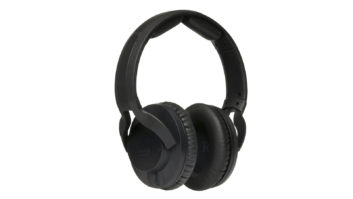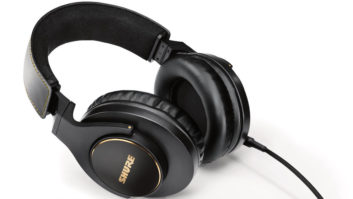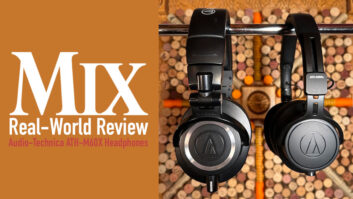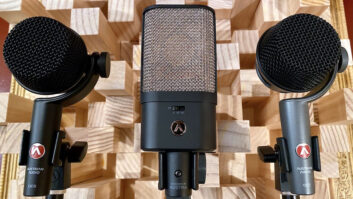
Microphones and headphones are both transducers, doing basically the same thing in reverse, so it should come as no surprise that Austrian Audio has brought its considerable expertise to the headphone market. The closed-back Hi-X55 and Hi-X50 (as in high excursion) share the same drivers, the same overall design and also a unique frequency translation that stands apart in the marketplace.
Out of the Box
Unlike many headphones today, the 50 and 55 have an understated, classy look based on dark greys, satin blacks and sleek lines. The padded aluminum headband is thick enough for rigidity, but vented down the middle (laterally across your head), allowing air circulation, more comfort and less weight. The ear cup adjustment sliders are firm, with only slight indentations that hold in-place. The oval ear cups swivel on strong pivots with metal hinges, and fold inward for compact storage. When in-place on your ears, the headband is positioned slightly forward on your head—an unusual feature that feels nicely balanced and encourages long-term comfort.
About the only difference between the 50 and 55 is the ear cups; the smaller 50 sits directly on top of the ears, while the larger 55 completely surrounds the ears. This difference accounts for not only the slightly heavier weight of the 55 (still a reasonable 305 grams, only 20 more than the 50s), but also the different frequency response between the two models (both rated from 5 Hz to 28 kHz). With a low impedance of 25 ohms, the resulting efficiency is a loud 118 dB spl/V.
The 44 mm drivers use a ring magnet system moving a copper-clad aluminum voice coil with a reportedly strongest-in-class magnetic field. The combination of power, stiffness and light weight makes for fast and accurate voice coil movements with very little “wobbling,” according to Austrian Audio, resulting in more punch and detail, and less coloration and distortion (less than .1% at 1 kHz). The ear pads are a soft, leather-like material over slow-retention foam with a large L and R inside the cups, clearly marking each at a glance.
The 50 and 55 each ship with a three-meter straight cable, terminated with a proprietary twist-lock mini-plug on the ear cup-side and an 1/8” mini-plug (with a 1/4” screw-on adaptor) on the other end. A storage bag is also included.
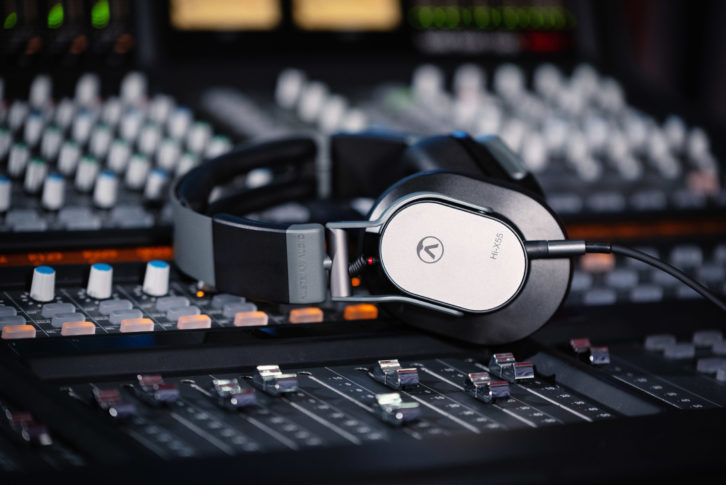
In Session
There’s a certain solid-feel and balance to both headphones that impresses right off the bat. When mounted on my head, the weight distribution had no particular pressure points; they’re reasonably snug and don’t feel like they’re going to fall off of your head should you lean forward. Despite these similarities, these headphones create very different listening experiences.
The 50’s ear pads are not much bigger than your ear and exert a good bit of pressure on them, but they weren’t uncomfortable. I found I could wear them for fairly long periods of time for mixing, but for a long day of tracking or overdubbing, the pressure was a little fatiguing.
For such longer sessions—or people who don’t like on-ear designs (of which there are many)—the 55 shares the same comfortable balance but with absolutely no weight or pressure on the ears. These feel spacious, but offer a sonic presence that seems a bit further away and feels like “listening in a small room” compared to the 50. Despite these significant differences, there isn’t a right or a wrong headphone here; it’s purely a matter of personal taste and preference. I found most clients preferred the 55 for fit, like I do, but some preferred the smaller size of the 50 (especially my clients who like to use headphones on-the-go as compared to earbuds).
After a lengthy break-in period, I found the 50 and 55 to sound quite similar, different only in mid-range frequency reproduction. Both share a tight, focused and accurate sound that is quick, punchy and tightly damped, not at all loose or flabby. Dynamics are nuanced and imaging is clearly defined, with the phantom center sounding truly centered. The tonal balance is not at all warm here; it is more clinical and exacting, more flat than sculpted. The bottom is strong when the source material is strong, but there is seemingly no hype; if the source is at all lacking in low-end fullness, then the headphones scream “thin.” Likewise, if the source is brittle or thin up-top, the Hi-Xs will starkly relay that; there is no smoothing or sculpting to mitigate the problem.
Mackie MP-360 & MP-460 In-Ear Monitors — A Real-World Review
Dirac Live Room Calibration/Correction – A Real-World Review
It is in the mid-ranges that I find the Hi-Xs to be so different from either of the prevailing market trends (a scooped out at 400-ish “smiley face” curve with considerable hype on both ends, or monster bass boosts). In general, the mids sound flat on the 50 and 55, and it takes some getting used to; you’ll reconsider some of your mix moves for sure. Not only are mids abundant here, but the 50 seems to have a response bump around 700 Hz that I wish wasn’t there, although with a little subtractive EQ, I was able to get superb results. The 55, in my estimation, had two response bumps—one at 500 Hz and another at 1.2 kHz—that got in the way of making accurate EQ decisions, although in all fairness, with a little subtractive EQ, it sounded quite good too.
The Final Mix
I found myself loving almost everything about the Hi-Xs with time and extended use—the fit (even though I wear glasses), the soft ear pads, the long straight cable, the well-marked L/R designations (for the talent’s sake), the excellent punch, the note differentiation among very low notes, the precise transients. Over time, I did not get used that stark and unforgiving midrange (and the accompanying mid-bumps) and could not mix solely on the 50 or 55, although they sure could inform decisions with other monitoring. For tracking and overdubs, my guitar-playing and vocalist clients mostly preferred the 55 over the 50, while the drummers and bassists preferred cans with a more boomy bottom and less midrange response.
The inevitable question beyond “do you recommend them?” (I do) is “which model is better?” and that can’t be answered. For people who “don’t like things on their ears,” they’re going to get a better user experience with the 55, which feels really roomy and open, if a bit less intense. For those who want a little more bottom end, more immediacy and a bit less bulk, the 50 will fit the bill nicely.
Austrian Audio • www.austrian.audio








